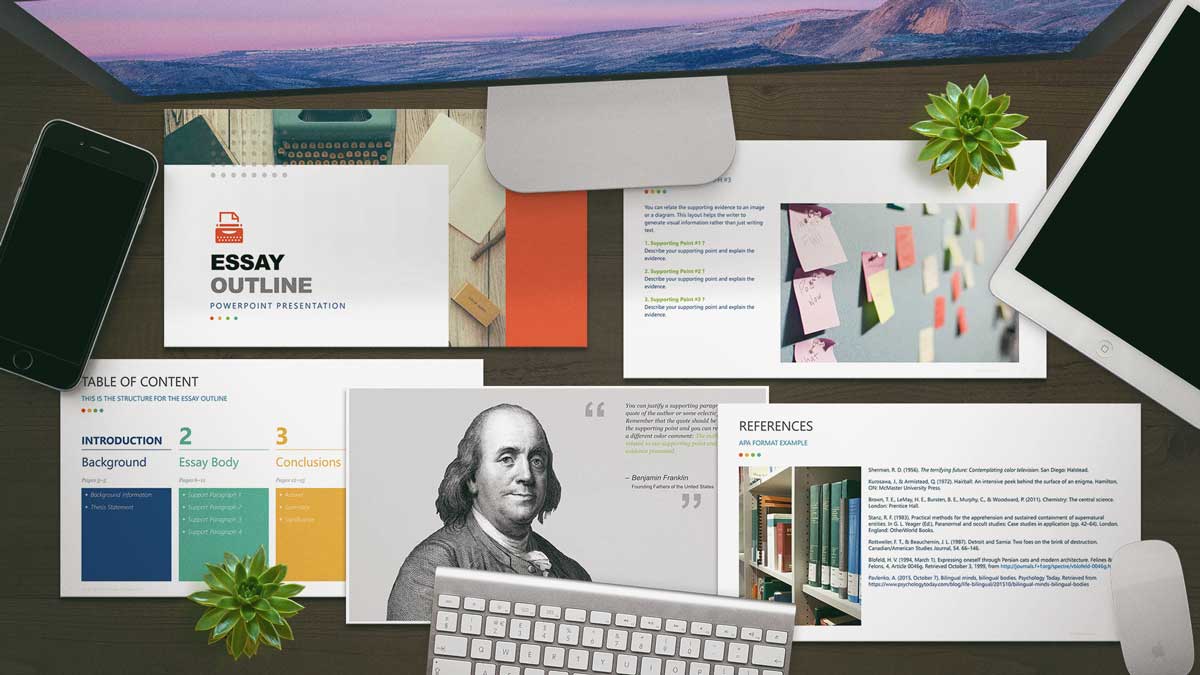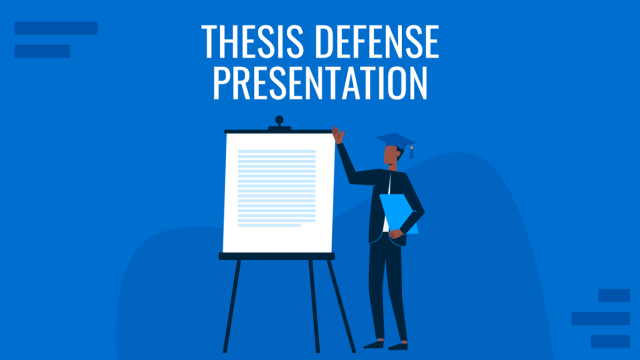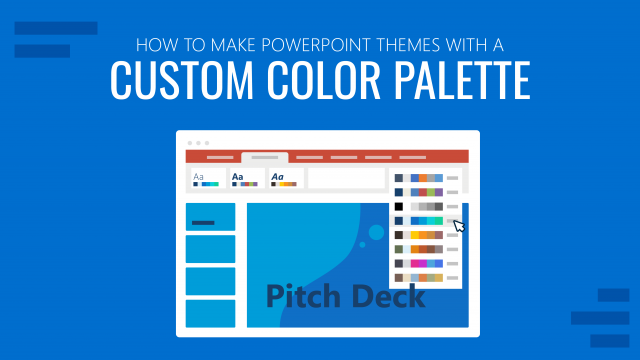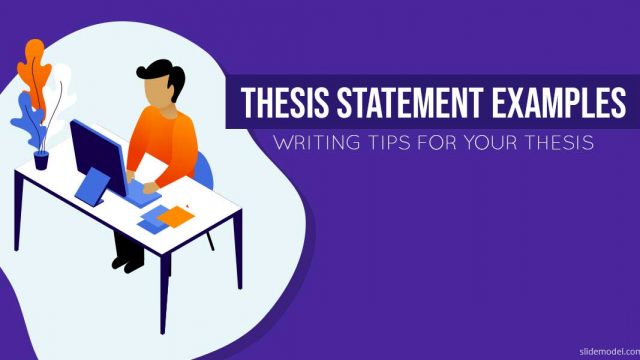
Writing is an essential skill every well-rounded human being needs to hone. However, it can be a challenging one to master, especially if you are more of a ‘talker’. That’s why so many students find essay writing to be quite a daunting chore during the first several years of college. Mostly because some don’t quite understand what this type of writing demands from you as an author. In this post, we’ll provide you with the proper structure you need to answer the question How To Write an Essay?
- What is an Essay?
- How to write an essay? – The Standard Essay Structure
- What Are The Popular Types of Essays?
- The Essay Outline
- Conclusions
What is an Essay?
One of the simplest and most succinct essay definitions comes from Frederick Crews, professor of English at the University of California at Berkeley:
“An essay is a fairly brief piece of nonfiction that tries to make a point interestingly.”
Let’s further unpack the different descriptors here:
- Brevity whether you are a professional essay writer penning submissions to magazines and newspapers or just a student, you should remember this: essays are designed to be short. As an assignment, most essays don’t run longer than 3-4 pages.
- Non-fiction an essay is a fact-based narrative, built using various arguments and counterarguments (more on essay format in the next sections!).
- Opinionated the goal of most types of essays is to clearly communicate one (or several) key ideas to the reader.
These three qualities act as certain ‘constraints’ that shape the form of an essay as a type of literary form and academic assignment. These constraints turn essay writing into an exercise in clarity, persuasion, consciousness, and analysis. Considering that not everyone excels in writing, some students initially find college essays somewhat challenging to master. But fret not, essay writing can come naturally with some targeted practice!
How to write an essay? The Standard Essay Structure
As most essays assume a clear linear narrative, they mostly have the same structure opening, main body, and conclusions.
The only exception is a narrative essay, where it’s more common to have a story-like narrative flow that includes an introduction, plot, characters, setting, climax, and conclusion.
That being said, let’s take a look at the classical structure that you can use for all other types of essay outlines.

Understanding the Essay Prompt
Before you begin writing an essay, it’s important to thoroughly understand the essay prompt or topic. Take the time to analyze the question or statement provided. Identify keywords, concepts, and any specific requirements or instructions. This initial step will help you establish a clear focus for your essay and ensure that you address all aspects of the prompt.
Brainstorming and Generating Ideas
Once you’ve grasped the essence of the essay prompt, start brainstorming ideas related to the topic. Jot down any thoughts, concepts, arguments, or examples that come to mind. Don’t worry about organizing them at this stage; the goal is to generate a pool of potential content for your essay. Consider different angles, perspectives, and potential research sources.
Thesis Statement Development
The thesis statement is the core of your essay. It encapsulates the main point or argument you’ll be making throughout the essay. After brainstorming, review your notes and identify the central theme or idea that stands out. Your thesis statement should be concise, specific, and assertive. It provides readers with a roadmap of what to expect in your essay.
When it comes to presenting your thesis or any related topic in front of an audience, a well-crafted presentation can make a significant difference. Using templates can help streamline this process. For instance, if you’re searching for professional templates tailored to academic or business presentations, you might consider using a 100% editable presentation template for your thesis, or even a free thesis presentation template. Such templates can assist in organizing your information in a visually appealing and structured manner, ensuring your audience remains engaged and grasps the essence of your message. Alternatively, there are presentation design and presentation assignment services, that can provide inspiration and guidance on design and structure your presentation.
Gathering Research and Evidence
Depending on the type of essay, you may need to gather supporting evidence from reliable sources to strengthen your arguments. Conduct research using academic journals, books, reputable websites, and other scholarly resources. Remember to properly cite your sources using the appropriate citation style (such as APA, MLA, or Chicago).
Essay Introductions Crafting
So if you are wondering how to start an essay, it’s simple: you make a general introductory statement or a more creative hook (if the topic permits) a short sentence that immediately captures the readers’ attention and prompts them to dwell into reading. For example, the famous Pride and Prejudice novel starts with a rather intriguing hook sentence:
“It is a truth universally acknowledged, that a single man in possession of a good fortune must be in want of a wife.”
This one line immediately sets the narrative tone and prompts to further plot twists. You may not be Jane Austen, but you can still write powerful essay openings using a few simple techniques. Here’s what makes a good hook for an essay:
- Quick dialogue
- Unexpected statistic
- Contested claim
- Common misconception
- Well-known quote
- Short definition of the key term or problem
More formal types of academic essays such as literary analysis essays or rhetorical analysis essays may also require you to write a thesis statement (not to confuse with thesis presentation) in the introductory section.
A thesis statement in essay writing is a one-sentence summary of your main ideas. It should clearly communicate what your essay is about and what’s your position in relation to the topic.
Essay Body Paragraph Development
The body of your essay will be the longest section since it needs to accommodate all your main idea(s), supporting arguments (and counterarguments), and extra details on the subject.
To get done with your writing faster, you can create a personal essay template for yourself and then “fill in the gaps”:
Essay body:
- Main Idea 1:
- Supporting Point 1
- Detail 1
- Detail 2
- Supporting Point 1
- Main Idea 2:
- Supporting Point 2
- Detail 1
- Detail 2
- Counterargument 1
- Detail 1
- Detail 2
- Supporting Point 2
By keeping the above structure in mind, you are guaranteed to get done with your writing faster!
Essay Conclusion Crafting
Every essay must have a short concluding paragraph ‘3-5 sentences max’ that recaps your main discussion points and draws the conclusion on the topic.
Here are several proven ways to end an essay on a positive note:
- Reiterate the points you’ve made in your thesis statement.
- Summarize all the arguments you’ve discussed.
- Draw a line and provide your final opinion.
- Or, leave a creative open end by posting a question to the reader.
Now you have a general idea of how to write an essay!
Review and Revision
Once you’ve written the initial draft of your essay, set it aside for a while before revising. Revising involves reviewing and refining your essay’s content, structure, clarity, and grammar. Check for logical flow, coherence, and the overall effectiveness of your arguments. Pay attention to sentence structure, word choice, and spelling errors.
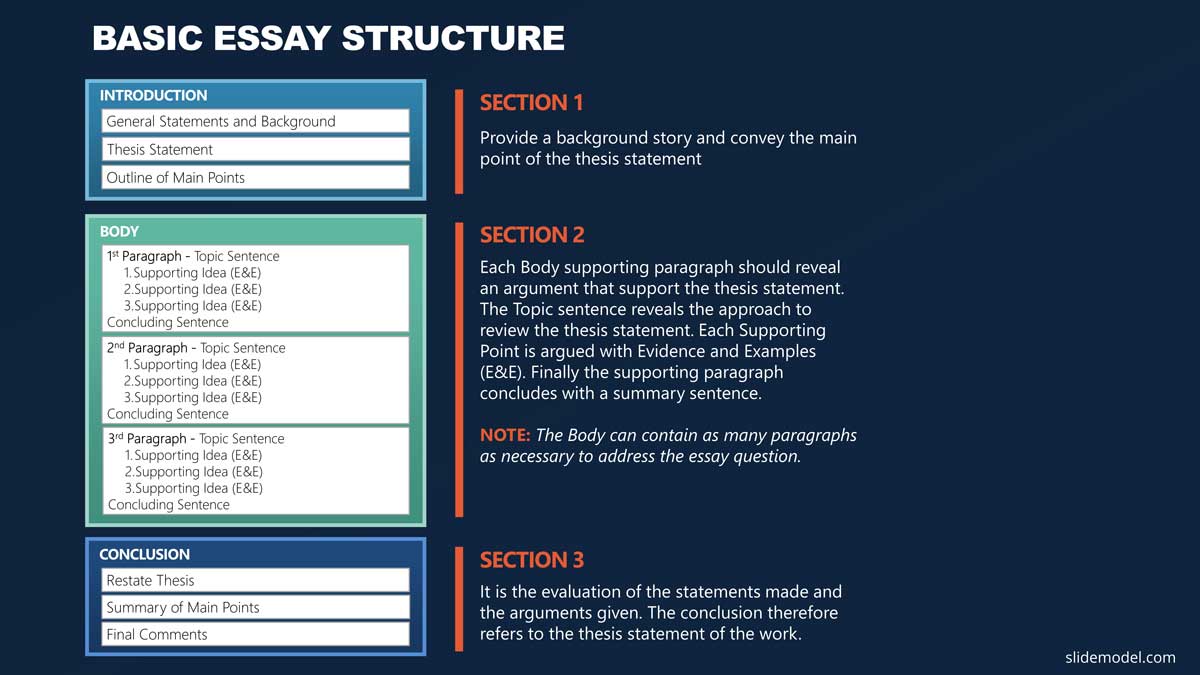
What Are The Popular Types of Essays?
Conversely, most academic essay types can be categorized into four main groups, based on the writing mode they require you to assume as a writer. These include:
Expository Essays
An expository essay attempts to draw the reader’s attention to an important matter or explain a certain phenomenon to them such as a process, the benefits of certain actions, the necessity of certain policies, etc. In other words, the goal of such essays is to ‘expose’ the reader to something new and provide them with clear information on the matter.
Some of the common sub-types of expository essays include:
- Informative essays as the name suggests, this essay type prompt you to describe an event, person, or place with a great level of detail, so that the audience becomes well-informed on the matter.
- Compare and contrast essay essays, exploring two opposing phenomena (ideas), and showing how they differ and what they have in common.
- Cause and effect essays attempt to depict how two (or more) events are connected. The goal of this essay type is to explain and analyze why or how something has occurred.
- Synthesis essays are aimed at practicing analytical thinking and require you to explore one idea from multiple angles and back up your findings with data from multiple sources.
Narrative Essays
Narrative essays fall into the category of creative writing and fill in the reader on some events that took place. Such essays need to have all the traditional elements of a story, plus encourage you to use first-person (unlike other types of essays):
- Introduction that sets the tone of the narrative and preps the scene for subsequent events.
- Plot with a clear narrative and consistent story arch that you keep throughout the narrative. A plot helps you ensure that your story goes somewhere.
- Character(s) narrative essays can be first-person accounts or use characters to communicate the author’s point of view.
- Climax the highest element in your narrative, a turning point where your essay reaches a certain development or resolution on something.
- Conclusions these can be creative or formal ones, depending on how creative the remaining of your narrative is.
A good narrative essay example would be A Ticket to the Fair by David Foster Wallace, where the author expertly describes his vivid experience of being pressed at the Illinois State Fair. Apart from painting the picture for the reader and creating a sense of presence, Wallace also manages to communicate a subtle, but recurrent point about how the East Coast views the Midwest.
The popular subtypes of narrative essays are:
- Personal essays autobiographical nonfiction writing that’s often conversational and rather intimate.
- Scholarship essays winning scholarship essays typically include a strong narrative linking the author’s experience to the values or knowledge that the particular university can provide.
- Reflective essays prompt the author to explore their personal feelings, emotions, or experiences and provide a narrative about how either of these had an impact on their life.
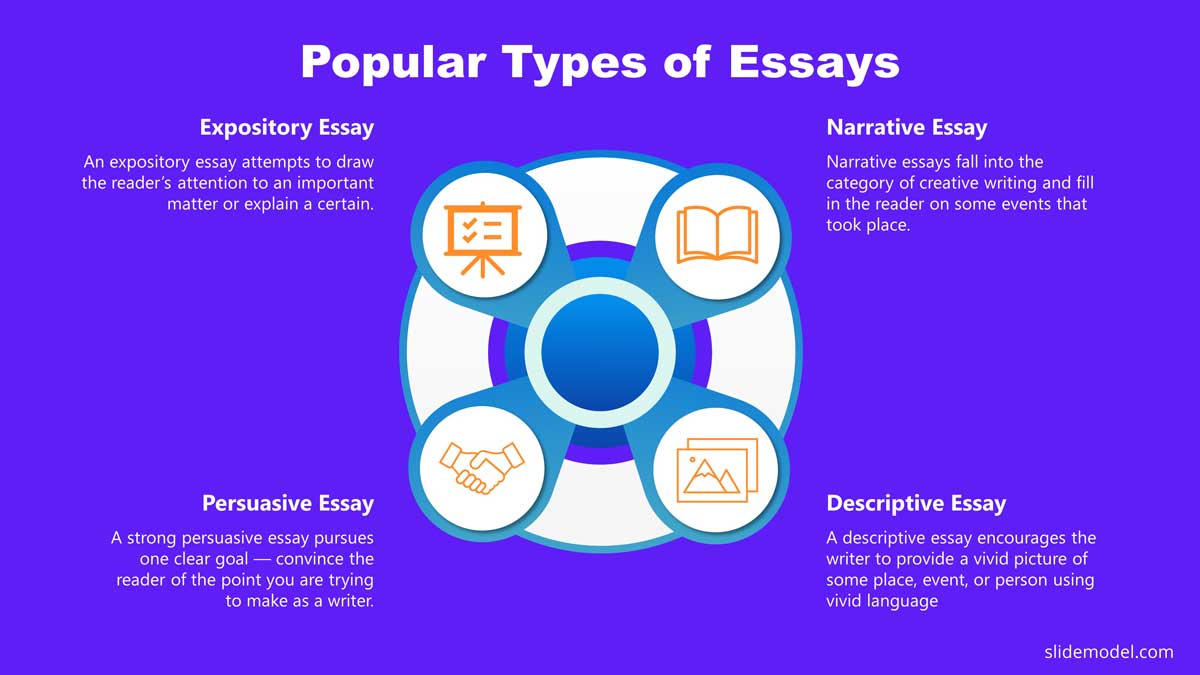
Descriptive Essays
A descriptive essay encourages the writer to provide a vivid picture of some place, event, or person using vivid language and figurative forms of speech such as metaphors, allegories, and analogies among others.
However, it’s important to note that writing descriptively does not always mean using “flowery” language. Take Hemingway as an example. He is well-known for being a brief, yet skillful writer that manages to effortlessly describe things using the most basic words. For example, here’s an excerpt from The Sun Also Rises:
“In the morning I walked down the Boulevard to the rue Soufflot for coffee and brioche. It was a fine morning. The horse-chestnut trees in the Luxembourg Gardens were in bloom. There was the pleasant early-morning feeling of a hot day.”
This paragraph does not contain any metaphors or other complex language structures. Yet, it creates a rich scene for the reader, full of small details and observations. His writing style is rather matter-of-fact and direct, yet still highly descriptive!
Persuasive Essays
A strong persuasive essay pursues one clear goal convince the reader of the point you are trying to make as a writer. Typically, you are required to pick up a controversial essay topic and find strong arguments to influence the common line of thought on the matter.
You can learn more about this type of writing from our previous post on persuasive speech writing.
The most popular sub-type of persuasive writing is an argumentative essay. As an author of an argumentative essay, you are challenged to collect main points and counterpoints from multiple sources, and then apply critical thinking skills to synthesize a narrative that defends the key point that you are trying to make.
Typically, the body of the argumentative essay will include several paragraphs that support your key argument (thesis statement), made in the introduction, and then a concluding paragraph that summarizes your reading. All the arguments should be presented in a clear, coherent matter and connected with one another using essay transition words such as ‘additionally’, ‘as well’ ‘equally’, ‘furthermore’, and so on.
The Essay Outline
Once you understand what an essay is, which is the basic structure, and what type of essay will you be writing, it is important to create your essay outline. Think of this document as a summary of your essay. It will contain the mentioned sections and elements of the essay structure but in a condensed form. This means you will be listing elements and ideas within the structure, before deep diving into it. Creating the essay outline is a critical step in order to organize the ideas. It will help you collect the evidence and examples in an ordered fashion and will improve your arguments,
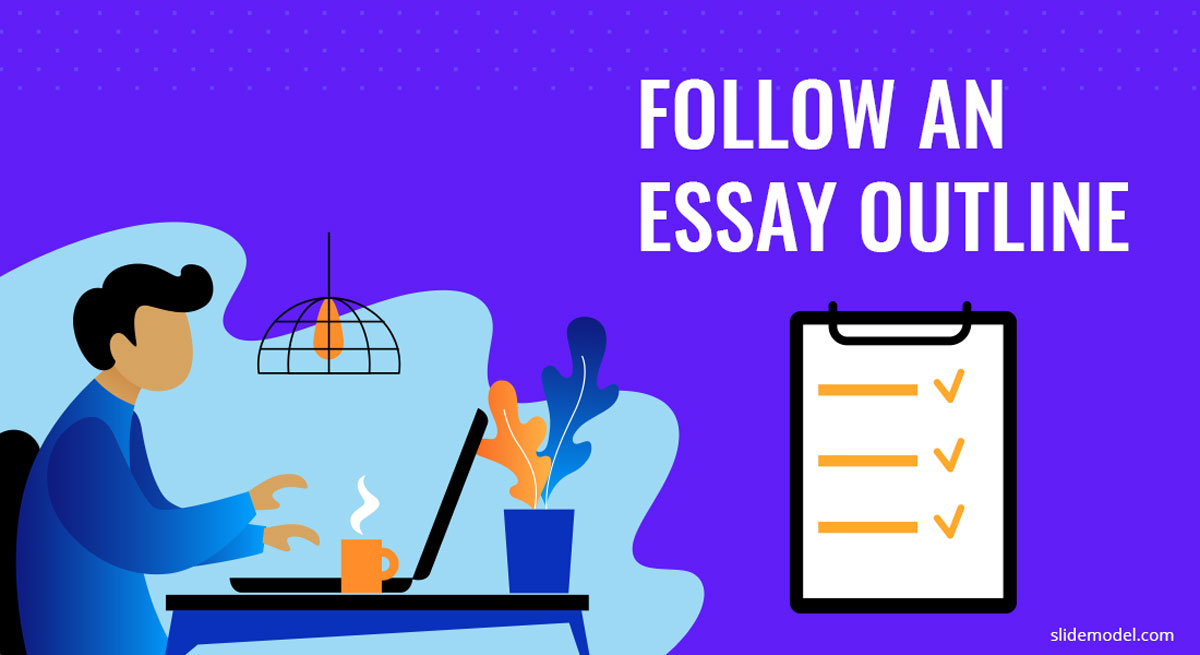
Conclusions
Essay writing is a skill every university student will have to master. While writing comes naturally to some people, others can also learn to craft great stories and build up persuasive narratives with some targeted practice! Remember: the key is understanding what type of essay you are planning to write and then using the appropriate structure and writing techniques to organize your main ideas and arguments and glue them together with transition words. Stop wondering how to write an essay. Just start with the structure and put your writing skills into practice.
